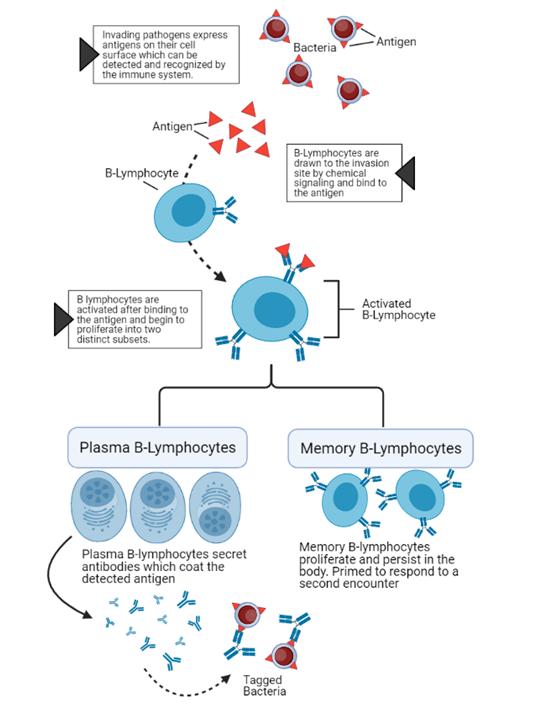Subject 2: Adaptive Immunity and Vaccines
An antigen is a molecular structure, for example, in the surface of harmful bacteria or viruses that cause disease. The presence of the antigen in the body triggers different responses from the immune system. One of them is the activation of B-lymphocytes, a type of white blood cells.
B-lymphocytes detect the antigen and differentiate into two different forms. One of them – the plasma B-lymphocytes – produce a large number of antibodies. Antibodies are specialized proteins that bind to the antigen and help facilitate the neutralization of the bacterium or virus. The other form is memory B-lymphocytes. They are not involved in the process of active neutralization, but remain dormant serving as a form of immunological memory.
When exposed to an antigen for the first time, it takes quite a long time for the immune system to neutralize the bacterium or virus – it spreads and we fall sick. However, during this first exposure memory B-lymphocytes form. The next time the antigen is detected in the body, the immune system can respond faster, stronger and more efficiently to the harmful bacterium or virus.
